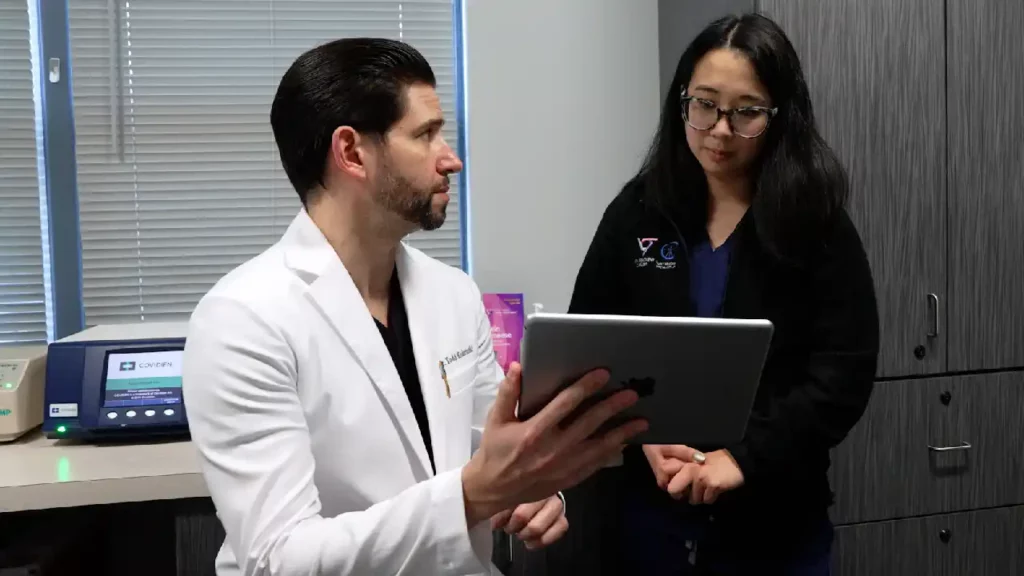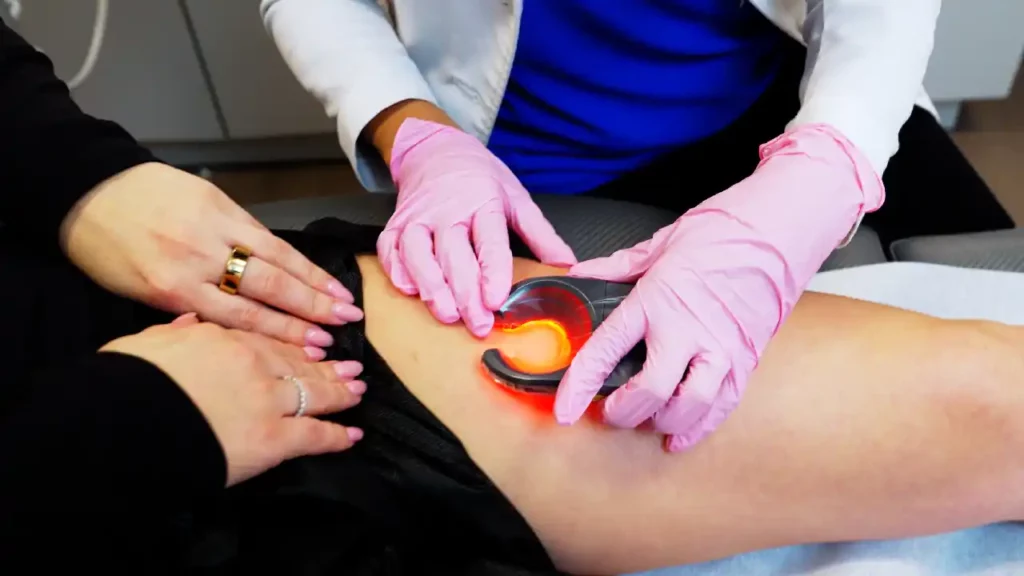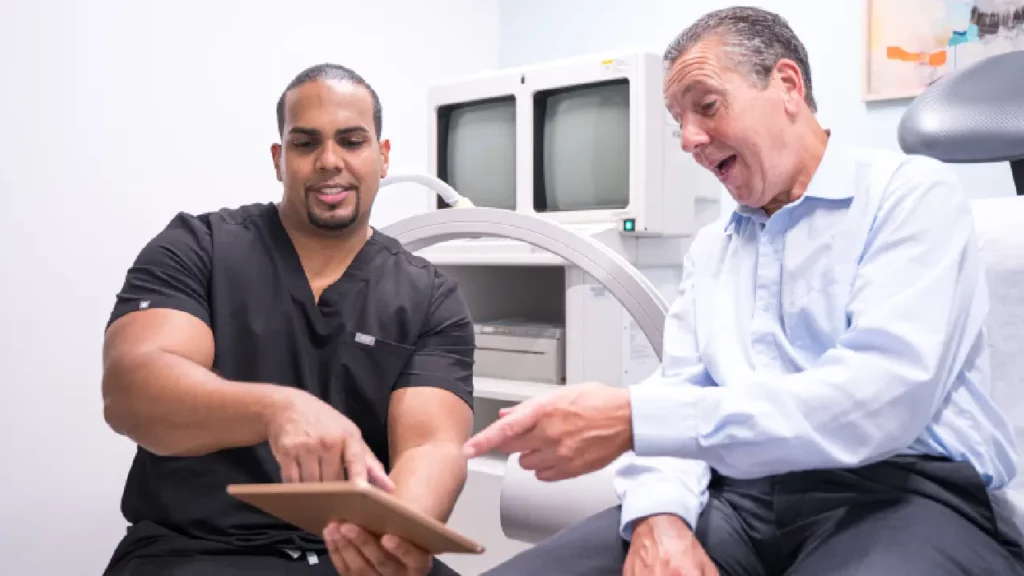Recovery After Ambulatory Phlebectomy: A Comprehensive Guide
If you’ve recently undergone an ambulatory phlebectomy or are considering one, it’s important to understand what to expect during recovery. Ambulatory phlebectomy is a minimally invasive procedure used to treat varicose veins and other vascular issues. While the procedure itself is relatively straightforward, the recovery period plays a crucial role in achieving the best possible results. In this guide, we walk you through the key aspects of recovery after ambulatory phlebectomy, from the immediate post-op period to long-term care.
What Is Ambulatory Phlebectomy?
Ambulatory phlebectomy is a minimally invasive procedure commonly used to treat varicose veins. It removes the affected veins through tiny incisions on the skin’s surface. The vein doctor identifies the problematic veins using ultrasound guidance and makes small incisions along their path. Then, using special hooks or forceps, the vein doctor gently pulls the varicose veins out of the body, section by section. This allows for the removal of the damaged veins while leaving the healthy ones intact, promoting improved blood flow.
Are you interested in getting more information about your condition or a treatment?
Fill the form below to start!
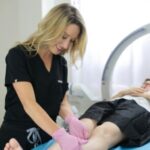
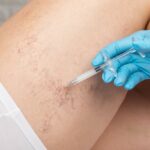
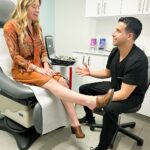
Immediate Post-Op Period
Expect Discomfort, Not Severe Pain
Immediately after your ambulatory phlebectomy, you may experience some discomfort. However, severe pain is not typical. Most patients describe the sensation as more of a dull ache or pressure than sharp pain. The discomfort typically diminishes within the first 24 to 48 hours.
Dressings and Compression Garments
Your vein doctor will place sterile dressings over the incision sites, which will help prevent infection and promote healing. In addition to dressings, you will likely be instructed to wear compression garments, such as compression stockings or sleeves. These garments help reduce swelling and promote blood circulation, aiding in the healing process.
Immediate Return to Normal Activities
You can resume regular activities and work immediately. You’re encouraged to start gentle walking immediately after the treatment to promote optimal blood circulation, but you should avoid standing or sitting for extended periods. Gradually increase your activity level as you feel comfortable, but continue to avoid strenuous exercises and heavy lifting for a few weeks.
Limit Physical Activity
During the immediate post-op period, avoid strenuous activities and heavy lifting. Rest and elevation of your legs whenever possible will help minimize swelling and discomfort. Your vein doctor will provide specific guidelines on when you can resume regular physical activities. Generally, it’s safe to resume more intense physical activities within a week or two.
Managing Pain and Discomfort
If you’re experiencing discomfort, your vein doctor may prescribe pain medication. Follow their instructions, and if you have any concerns or side effects, reach out to your vein doctor. Applying ice packs to the treated area can help reduce swelling and provide relief. Be sure to use a thin cloth or towel to protect your skin from direct contact with the ice.
Long-Term Recovery Guidelines
Follow-up Appointments
You will have follow-up appointments with your vein doctor to monitor your progress. During these visits, they will assess the healing of the incision sites and check for any complications. It’s essential to attend these appointments to ensure a successful recovery.
Compression Garments
Continue wearing compression garments as recommended by your vein doctor. They are crucial for minimizing swelling and promoting blood flow, which aids in the healing process. Your vein doctor will provide guidance on how long you should wear them.
Scar Care
While ambulatory phlebectomy leaves minimal scarring, it’s essential to care for your incision sites. Keep them clean and dry to prevent infection. Over time, the scars will fade, but you can also discuss scar management options with your vein doctor if you wish.
When to Seek Help:
- Infection: Though rare, infections can occur at the incision sites. Watch for signs of infections, such as increased redness, swelling, warmth, or discharge from the incisions. If you suspect an infection, contact your vein doctor immediately.
- Blood Clots: While the risk of blood clots is low, it’s still essential to be aware of the signs. Symptoms of a blood clot in the leg (deep vein thrombosis) include swelling, pain, warmth, and redness. If you experience any of these symptoms, consult your vein doctor immediately.
- Persistent Pain: If you continue to experience worsening pain, consult your vein doctor. Persistent pain may indicate a complication that requires further evaluation and management.
Long-Term Care and Prevention
While ambulatory phlebectomy is an effective treatment for varicose veins, it’s essential to take proactive steps to reduce the risk of recurrence. Incorporating certain lifestyle changes and habits can significantly contribute to your long-term vascular health. Here are some key lifestyle tips to help you maintain the results of your procedure and reduce the risk of recurrence.
Maintain a Healthy Weight & Diet
Carrying excess weight places additional stress on your veins, especially in the legs. This can contribute to varicose veins and exacerbate existing ones. Maintaining a healthy weight through a balanced diet and exercise can alleviate this pressure and reduce the risk of recurrence.
Consume a diet rich in fruits, vegetables, whole grains, lean proteins, and healthy fats. This helps with weight management and provides essential nutrients that support overall vascular health. Antioxidants found in colorful fruits and vegetables, for instance, can help protect blood vessels from damage. Adequate hydration is also essential for maintaining healthy blood circulation. Make sure to drink enough water throughout the day, as dehydration can lead to thicker, less efficient blood flow, potentially increasing the risk of vein issues.
Engage in Regular Exercise
Engaging in regular physical activity is one of the most effective ways to promote blood circulation in your legs and reduce the risk of varicose vein recurrence. Exercise helps strengthen the leg muscles, which pushes blood upwards against gravity.
Incorporate exercises that focus on the lower body, such as walking, cycling, swimming, and leg lifts. These activities can help prevent blood from pooling in the leg veins, reducing the likelihood of varicose vein formation or recurrence. If your job or daily routine involves extended periods of sitting or standing, take breaks to move around and stretch your legs. Prolonged immobility can increase the risk of blood pooling in the lower limbs, leading to varicose veins.
Wear Compression Stockings
Even after your recovery, consider wearing compression stockings as recommended by your vein doctor. These garments help maintain proper blood circulation and support the weakened vein walls, reducing the risk of varicose vein recurrence. Graduated compression stockings, in particular, apply more pressure at the ankle and gradually decrease towards the thigh. This encourages blood to flow upward, preventing it from pooling in the lower leg veins.
Elevate Your Legs
Elevating your legs whenever possible is a simple yet effective way to reduce venous pressure and minimize the risk of varicose vein recurrence. When you elevate your legs, gravity helps drain blood from your legs back toward your heart. To elevate your legs properly, lie down and prop your legs up on pillows or cushions. Ideally, your legs should be elevated above heart level for maximum benefit.
Regular Check-ups
Continue seeing your vein doctor for regular check-ups and screenings. These appointments allow your healthcare team to monitor your vascular health and detect any potential issues early on. Early intervention can lead to more effective treatment and prevention strategies. During your check-ups, discuss any concerns you may have about your vascular health, including any changes in symptoms or the appearance of your legs. Your doctor can provide guidance tailored to your specific needs.
Consult Our Vein Doctors Today
Proper recovery after ambulatory phlebectomy is crucial for optimal results. While the immediate post-op period may involve some discomfort, it’s important to remember that this is a normal part of the healing process. With proper care, including rest and compression garments, you can expect a smooth and successful recovery. Remember that every individual’s experience may vary, and it’s essential to communicate openly with your vein doctor throughout recovery. By following their guidance, you can increase your chances of long-term success.
Vein Treatment Clinic is led by a team of board-certified vein doctors who guide you through every stage of the recovery process. Our vein doctors only offer the latest, safest, minimally invasive vein treatments, including ambulatory phlebectomy. We also offer comprehensive guidelines on ensuring optimal results and reducing the risk of recurrence. Furthermore, in addition to ambulatory phlebectomy, we also offer treatments that address the root cause of your vein problems, such as chronic venous insufficiency, thus ensuring long-lasting results.
You can find our vein treatment clinics in New York City, Long Island, New Jersey, Maryland, and California. Please schedule an appointment at your nearest vein treatment clinic.





